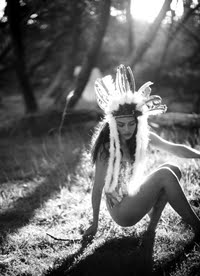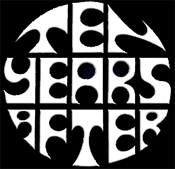

The cover of Sahm’s next record, 1971’s The Return Of Doug Saldaña, said it all. “He’s sitting on my front porch (in Bulverde, Texas), leaning back in a chair holding a bottle of Big Red,” says Meyers. “He owes me enchiladas for that.” For the uninitiated, Big Red is an all-the-sugar-and-twice-the-caffeine soda that originated in Texas and is usually consumed by kids too young to know better. Still, Sahm always enjoyed the stuff, and the elixir probably took the edge off of the copious amounts of weed he was smoking. Hyperactive with or without Big Red, Sahm moved home to San Antonio only to quickly leave again. This time he headed to Austin, where he helped blaze the trail of so-called redneck rock.
Divorced and living down the road from the Soap Creek Saloon, Sahm grooved into another essential phase of his musical sojourn. Between Soap Creek and the Armadillo World Headquarters club, there was an assortment of cosmic cowboys hanging around—including Jerry Jeff Walker and the newly arrived Willie Nelson, who was eager to reinvent himself after a decade of songwriting in straight-laced Nashville. Sahm established a weekly gig at Soap Creek and set about gathering his troops. Jack Barber moved up from San Antonio, and George Rains followed Sahm from San Francisco. Old pals like Rocky Morales and trumpeter Charlie McBirney gave Sahm the toughest horn section in town, reviving memories of the fabled West Side Sound.
Austin also allowed Sahm to be supportive of musicians less fortunate than himself. By reviving Fender’s classic tune “Wasted Days And Wasted Nights” during his Soap Creek sets, Sahm showed empathy for a forgotten compadre who’d been imprisoned for marijuana possession and had withdrawn from the music business. He eventually coaxed Fender out of retirement, securing the singer a reassuring comeback gig within the friendly confines of Soap Creek. Sahm also produced the “Red Temple Prayer (Two-Headed-Dog)”/“Starry Eyes” single for Roky Erickson, who’d fallen on hard times due to a nasty combination of schizophrenia and drug abuse.
In 1973, Atlantic Records honcho Jerry Wexler produced Doug Sahm And Band in New York City. The star-studded album featured Meyers, Dr. John, David “Fathead” Newman, an obscure accordion player named Flaco Jimenez and the very famous Bob Dylan. “In many ways, Doug and Bob were flip sides of each other’s personalities, which is why they were so musically compatible,” says Chet Flippo, Sahm’s friend and a veteran music journalist. “Each perhaps secretly envied the other a little bit and hoped that some of that particular magic would rub off.”
Wexler had signed both Sahm and Willie Nelson to recording contracts, but neither artist fared well with Atlantic. (Nelson’s success came soon after leaving the label.) Speedy Sparks, a roadie for Sahm and sometime bassist with the SDQ, remembers the influence Sahm had on Nelson. “Willie wanted that rock ‘n’ roll crowd, and Doug had them,” he says. “Willie would come out and watch Doug and figure out what Doug was doing. Willie got the hip rednecks, and then he won everybody else over. At first, Doug was the king, not Willie or Jerry Jeff or Waylon.”
Using leftover tracks from Wexler’s Manhattan sessions, Sahm pieced together a 1973 album called Texas Tornado. “Texas Tornado is one of the records that made it hip to play country music in Texas,” says Steve Earle. “There used to be a dividing line between musicians that played pop music and the musicians that played country. It was a social line, too. That whole Armadillo World HQ/Soap Creek Saloon thing in Austin, it changed Texas.” 1974’s Groovers Paradise was a passionate homage to Austin and featured the former rhythm section of Creedence Clearwater Revival. Sahm was still making great music, but his commercial success was dwindling.













.JPG)









































































2 comments:
thank you
maybe the mex-side of Doug Sahm next time?
Great mix, hard to beat Cowboy Peyton Place. Wexler had it right when he called Sir Doug the Rosetta Stone of Texas music.
Thanks, Mike
Post a Comment